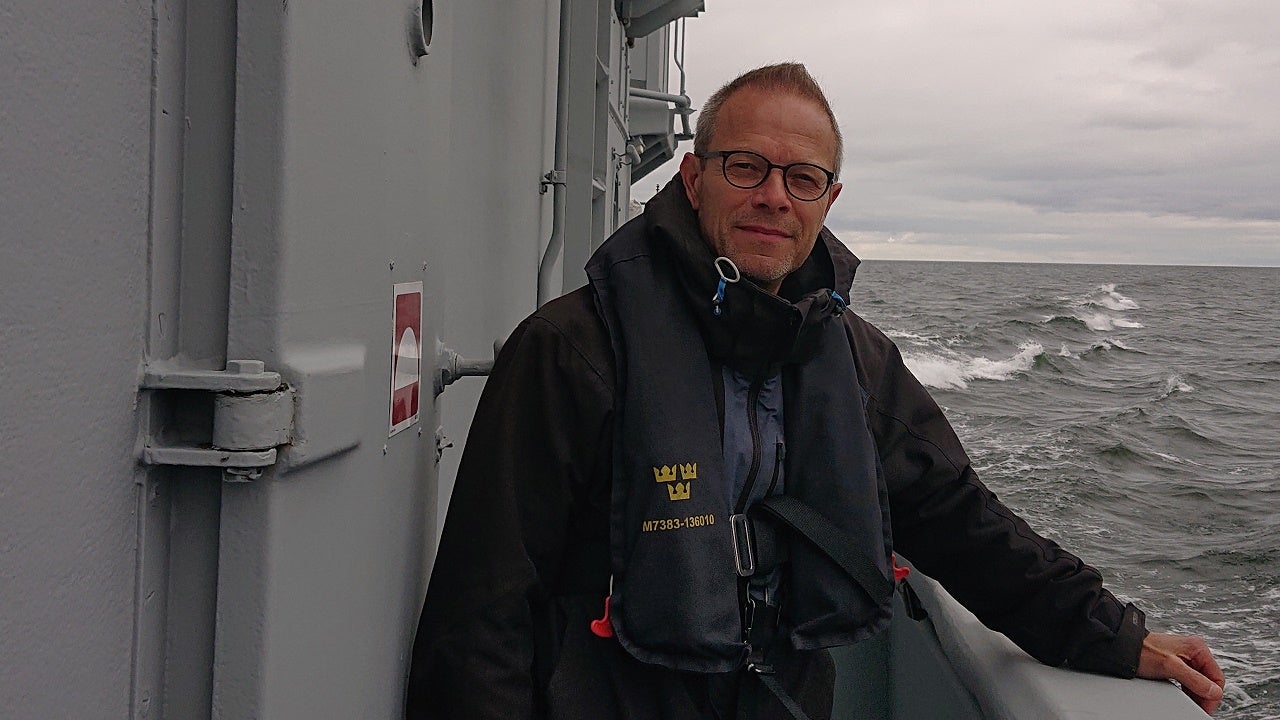
Agne Suipyte: Weapon alignment – what does it mean and why do you say that it is so important?
Bengt Schill, CEO of Schill Reglerteknik: Alignment of a ship’s weapon system is basically to make sure that all sensors and weapons refer to the same point in space e.g., the target position, no matter the range and direction of the target. With today’s threats from modern missiles, the first salvo must hit the target since there is no time to redirect the fire. The state-of-the-art shipboard weapon systems are incredibly capable and precise but only when correctly aligned you will benefit from their full potential. In fact, for a naval ship, correct alignment is probably the difference between being an impregnable fortress or a sitting duck.
AS: I have seen on your home page that Schill’s alignment systems are used in more than 25 countries today. What are the key factors to your success?
BS: No doubt, our biggest strength is that we have profound knowledge of the customer’s application, as well as expertise in the latest sensor and measurement technology, a combination that is quite unique. With our background in weapon control and extensive investments in R&D, we have been able to create products of great value to our customers. To exemplify, we have developed new faster and more accurate alignment procedures instead of just computerising traditional methods.
AS: In what ways does the new alignment technology differ from the traditional methods?
BS: The main difference is, of course, that static alignment now can be done with the ship afloat rather than in the dry dock. It means that there is practically no influence on the ship’s routine. In addition, complete static and dynamic alignment can be performed in only two days compared to approximately two weeks previously. Thirdly, our versatile measurement equipment not only performs alignment with highest possible accuracy but efficiently detects possible faults in the weapon system as well. Last but not least, the introduction of the new alignment technology leads to huge savings in time and cost.
AS: Can your alignment systems be used with all present weapon systems?
The basic principles of alignment are the same for all weapon systems. By providing a few special mechanical adapters or electrical interfaces our alignment systems can quite easily be tailor-made for any customer.
AS: How can you prove that your alignment systems do what they are supposed to do?
BS: Over the years, our customers in various countries have carried out hundreds of successful firing tests subsequent to alignment so we have a pretty good track record.
AS: You mentioned that your alignment systems can be used to detect faults in the weapon systems. How does it work?
BS: First, you carry out static alignment. Then, during subsequent dynamic alignment when the weapon system is tested in full operation, the tracking and follow-up errors should ideally be zero or very small. If not, it indicates malfunctions in the weapon system, which are not due to a misalignment. Special measuring procedures and evaluation algorithms built-into our alignment systems not only detect the errors but also support tracing and analysis of possible causes.
AS: What is trending in weapon alignment right now?
BS: More and more navies are realising that in order to take full advantage of their powerful weapon systems they need equally advanced tools for alignment, which is good for us.


